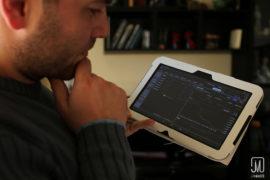
Meyer Lansky… one of the most successful money launderers in modern history. He schemed, siphoned and skimmed money from illegal gains in the casino business and filtered $1 billion through Swiss banks, Hong Kong businesses and shell companies in the Caribbean.
He even bought an offshore Swiss bank to launder his money.
He was never caught, and his methods formed what’s considered modern-day laundering. Here’s how he did it.
From Meyer Lansky: The Shadowy Exploits of New York’s Master Manipulator…
At first, Meyer funneled much of the money into legitimate and quasi-legitimate businesses in the United States. Many other crime bosses had done the same, more as a front than to hide income from the tax man. Real estate, food processing and distribution, garment production and restaurants were popular choices… None of this was enough; the enormous amount of money coming in outstripped their means to secrete it…
What Meyer did was find a new home for dirty money — the anonymous, numbered Swiss bank account. From there, dirty money could be used as collateral for legitimate bank loans, and the cash from the loans could then be funneled back into investment in the United States.
To be clear, this isn’t a step-by-step guide to breaking the law… It’s actually a case study in how to turn cash into something that actually has value.
Because today’s "money launderers" understand that cash itself is a liability. Today’s launderers take advantage of cheap credit to buy things like real estate.
Take South African billionaire Nathan Kirsh, whose net worth is about $5.1 billion. He spends his time hopping around his 86 Restaurant Depots and 10 Jetro Cash & Carry stores mostly on the East Coast of the United States.
Claim up to $26,000 per W2 Employee
- Billions of dollars in funding available
- Funds are available to U.S. Businesses NOW
- This is not a loan. These tax credits do not need to be repaid
His company’s EBITDA margins are twice that of Costco, and he actually owns most of the land his stores are on.
And here’s how he’s turning cheap cash into real money. From Bloomberg:
He raised $1 billion in a private debt placement in April as yields on U.S. corporate bonds fell and used the proceeds to repay short-term debt and pay a one-time dividend to Jetro shareholders…
The billionaire is using some of the cash to buy property, which he said is a hedge against global inflation. He controls about 70% of the Jetro and Restaurant Depot warehouses, as well as residential and commercial real estate in the U.S., the U.K., South Africa and Australia.
"Our business in the U.S. is a big business that throws off cash, and we strip that cash," Kirsh said in London. "I just don’t want that money lying around. We are certain that inflation isn’t going away, so it’s smart to be borrowing cheaply and putting it into real assets."
And he’s not the only one taking advantage of today’s cheap credit. Banks that park their cash with the Federal Reserve can borrow cheaply and turn around and make loans that rake in 10 times the interest.
It’s simple math… low-hanging fruit, if you will. But loans aren’t quite real assets…
But Kirsh has the right idea. Cash that just sits around could lose a lot of its value — especially as the Fed keeps the pedal to the metal with its easing programs.
And there’s always the potential for borrowers to default.
With such cheap credit, though, the risk is small… But turning that cheap credit into something of real value is the best way to hold on to your wealth.
Real assets can be better than a bank full of money, and Kirsh is the perfect example of how to make real assets work for you. His investments in commercial real estate have all been successful, and his 42% stake in Abacus Property Group, an Australian REIT, has increased its value by 50% since 2009.
I’m not telling you to go out and invest in real estate — though if you have the means to borrow cheaply and get into a property with growing returns, that doesn’t sound like a bad deal to me (and I’ll be heading to Nicaragua later this month to find some prime properties that fit that bill).
I’m telling you to start analyzing your portfolio… Your whole portfolio, not just the one you hold with your broker. What does your savings account look like? How much do you own on your home? Did you loan money to your brother for his small business?
Everything counts… and the more you know the real value of your assets, the better off you are when the value of your cash takes a nosedive.
It’s time to start laundering that cash. Find real assets that you can park your wealth in and generate actual returns.
Happy Investing,
Sara
Disclaimer
Article brought to you by Inside Investing Daily. Republish without charge. Required: Author attribution, links back to original content or www.insideinvestingdaily.com. Any investment contains risk. Please see our disclaimer.



